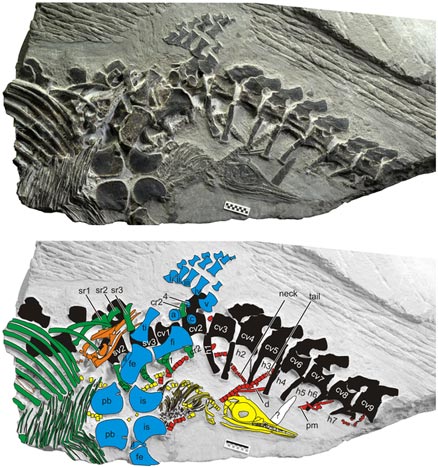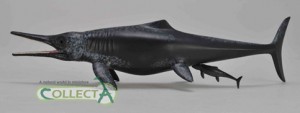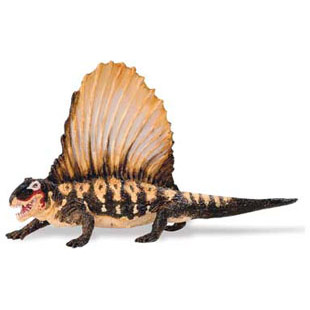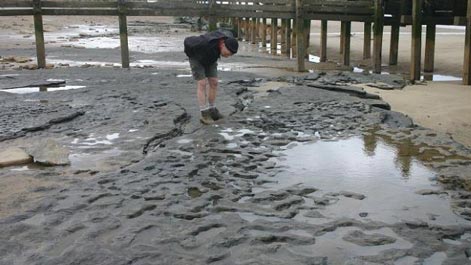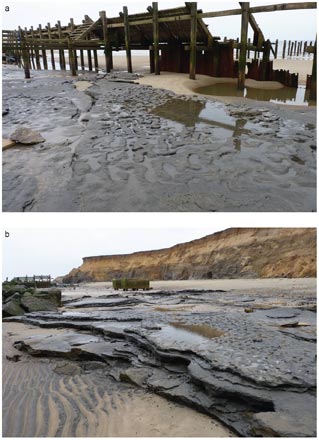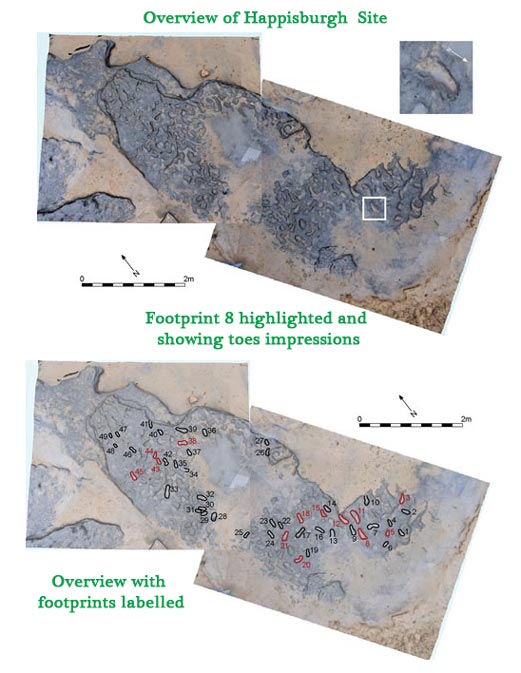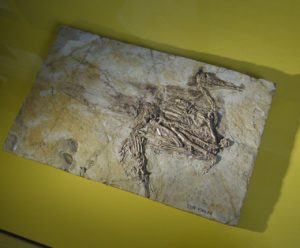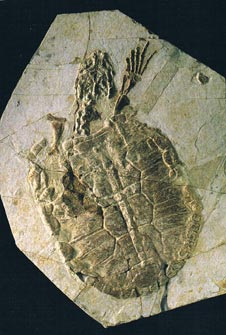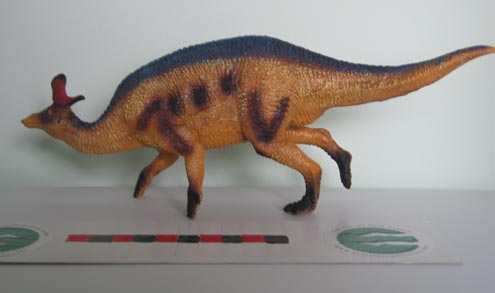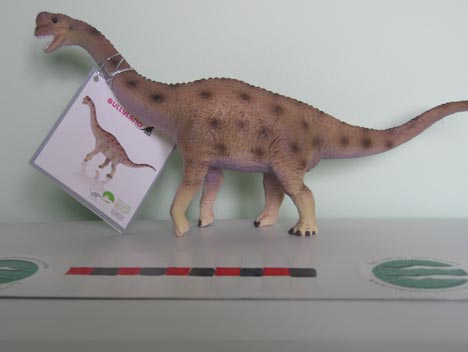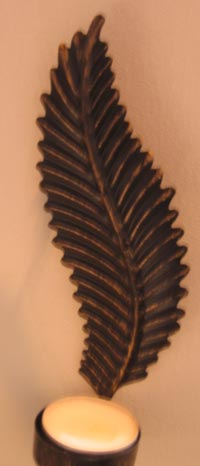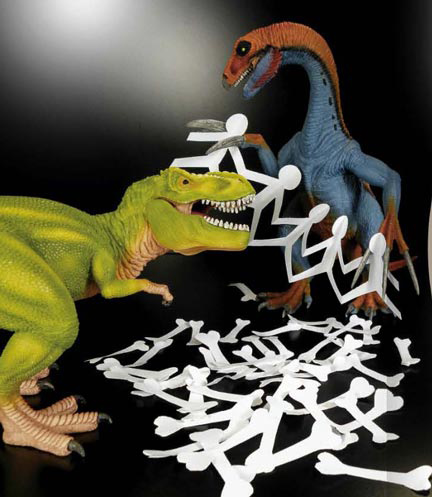Basal Ichthyosaur Fossil Suggests Origins of Live Birth on Land
Primitive Ichthyosaur Chaohusaurus Provides New Data on Origins of Viviparity in Marine Reptiles
Scientists had thought that the ability to give birth to live young (viviparity) evolved in ancient reptiles that had fully adapted to a marine environment. The ability to give birth to live young rather than to have to scramble ashore to lay eggs in a nest is known in a number of extinct genera of ichthyosaurs. A series of fossils discovered last year have helped scientists learn more about the origins of the ichthyosaur group and one remarkable specimen has shed light on the origins of live birth.
Ichthyosaurs (Fish Lizards)
Ichthyosaurs (the name means “fish lizards”), or more correctly termed members of the Ichthyopterygia, are perhaps the most highly adapted to a marine habitat of all the types of marine reptile discovered to date. Originating in the very Early Triassic, these reptiles evolved streamlined bodies, tails with flukes and flippers. They superficially resemble today’s whales and dolphins.
An Illustration of a Typical Jurassic Ichthyosaur
Picture credit: Everything Dinosaur
Ichthyosaur Genera
Fossils representing at least six different ichthyosaur genera have provided evidence of live birth in this particular group of reptiles, but until now it had been thought that as these reptiles adapted to a life in the sea, they gradually evolved the ability to give birth in the water rather than having to venture out onto land to lay eggs. However, a group of Chinese and American scientists, in collaboration with an Italian based colleague, have published a paper on a series of Chaohusaurus fossils that indicate that viviparity may have evolved in the terrestrial ancestors of these animals.
The paper detailing the research work has been published in the academic, on line journal PLoS One (public library of science).
Basal Ichthyosaur Fossil
A field expedition to a fossil quarry that had exposed Lower Triassic strata, yielded over eighty different specimens of the primitive ichthyosaur known as Chaohusaurus from a marine assemblage, representing sediments laid down in a relatively sheltered, shallow tropical sea. The fossil site is located in south Majiashan, near the city of Chaohu in Anhui province, approximately 150 miles east of the Chinese city of Shanghai. The site had been extensively mapped in 2013 and when the U.S./Sino research team explored a slab of rock with preserved remains of the ray-finned fish Saurichthys contained within it, they discovered the fossilised remains of a female Chaohusaurus and her babies.
The position of the fossilised young indicate that the mother and offspring perished during the act of giving birth and the “head-first” orientation of the baby reptiles suggests that viviparity in these animals was inherited from terrestrial ancestors and not an adaptation to living in the sea.
Viviparity Inherited from Terrestrial Ancestors
The scientists which include researchers from the University of California, the Field Museum (Chicago), Peking University and Anhui Geological Museum, have stated how important these fossils are, as very few fossils of primitive, Early Triassic ichthyosaurs are known. It is hoped that these specimens will help scientists to understand in more detail the transition from terrestrial reptiles to fully adapted marine animals. The strata has been dated to around 248 million years ago and this indicates that ichthyosaurs were already very well adapted to marine habitats not long after the Permian mass extinction event.
Other fossils of Ichthyosaurs which are believed to show animals that died during the process of giving birth show babies emerging from the mother tail first. This the usual orientation seen in the majority of air breathing marine vertebrates as being born tail first avoids suffocation. However, in land-based animals that are viviparous, being born head-first is the norm.
The Slab of Chaohusaurus Ichthyosaur Fossil Material (Mother and Babies)
Picture credit: PLoS One/Motani et al
The picture on top is the actual fossil slab, with a colour coded interpretation shown underneath. Elements coloured black are the back bones of the mother. The bones coloured blue represent a hind flipper and part of the pelvis of the mother, whilst embryos number one and two are coloured yellow and orange. The bones coloured red indicate other material from new-born ichthyosaurs. The bones coloured green are the ribs and gastralia of the maternal specimen. The scale bar provided measures one centimetre.
Live-bearing Marine Reptiles
Commenting on the research Dr Motani (University of California), one of the lead authors of the scientific paper stated:
“We always assumed that live-bearing in marine reptiles evolved after they invaded the sea, partly because of this difference [evidence to suggest tail-first births]. Now the new fossil shows that the most primitive marine reptile gave birth head first. This strongly suggests that they inherited live-bearing from their land ancestors.”
Perhaps one of the most famous examples of ichthyosaur live birth comes from Germany.
An Image Showing “Tail-First” Live Birth in Ichthyosauria
Picture credit: CollectA
The picture above shows a Jurassic ichthyosaur model (Temonodontosaurus) in the act of giving birth. The baby is emerging from the mother tail first.
To view the CollectA range of not-to-scale models and figures: CollectA Prehistoric Life Figures.
The scientific paper: “Terrestrial Origin of Viviparity in Mesozoic Marine Reptiles Indicated by Early Triassic Embryonic Fossils” by Ryosuke Motani, Da-yong Jiang, Andrea Tintori, Olivier Rieppel and Guan-bao Chen published in PLoS One.



